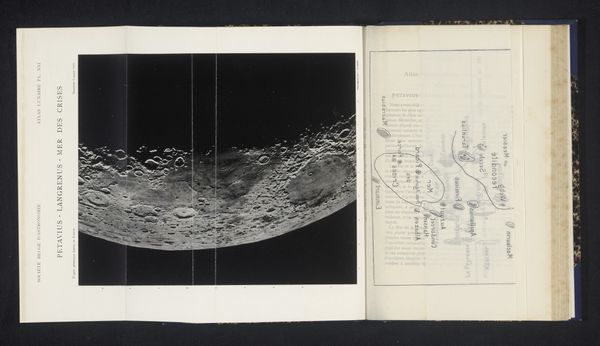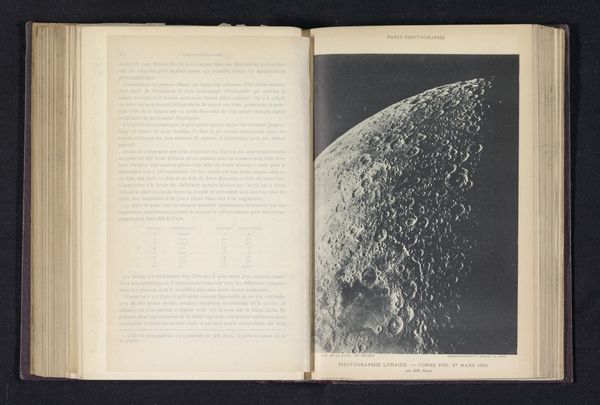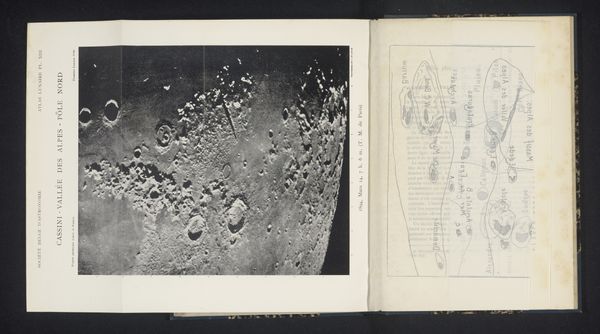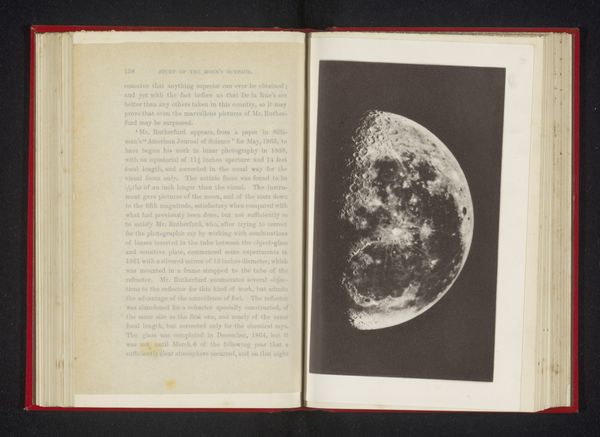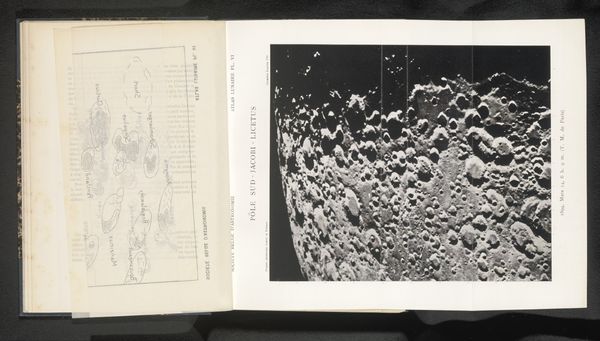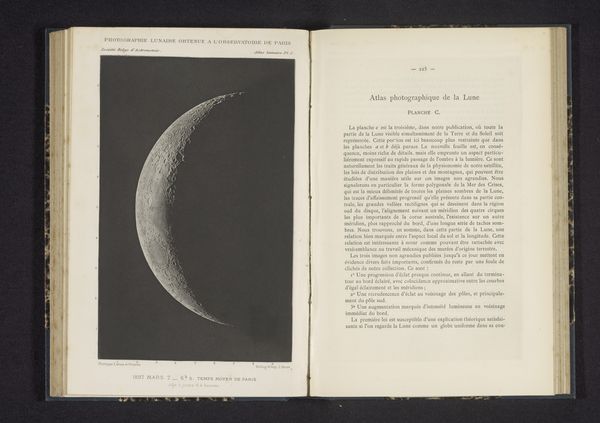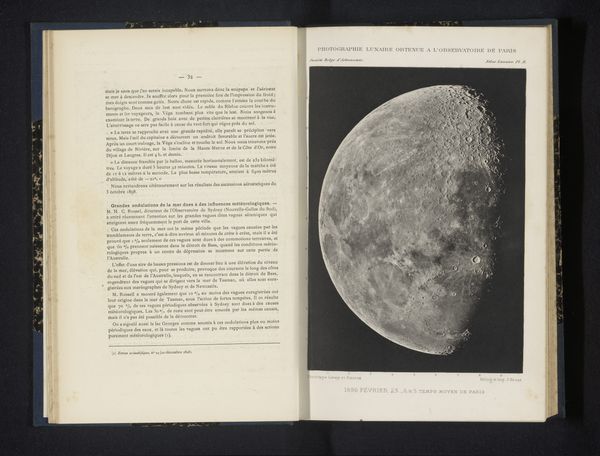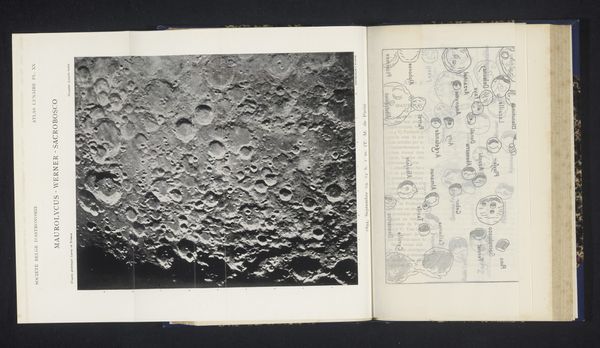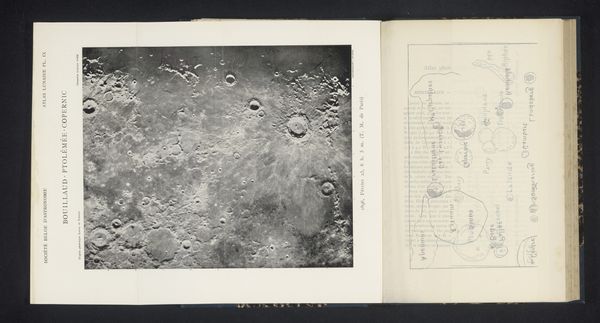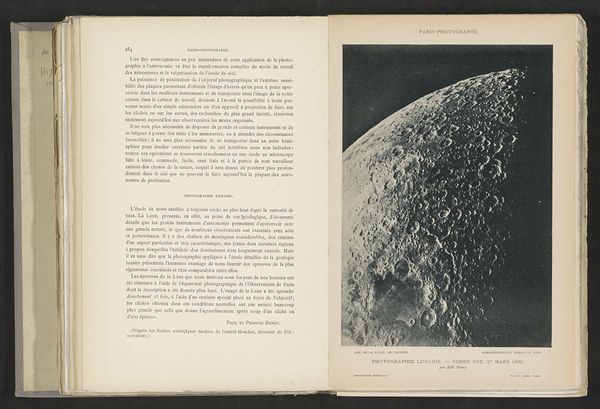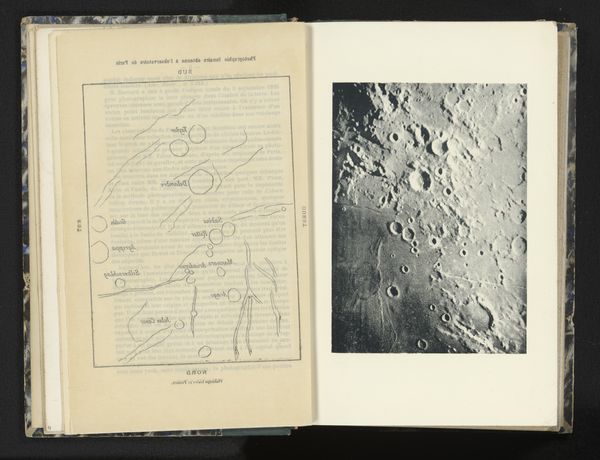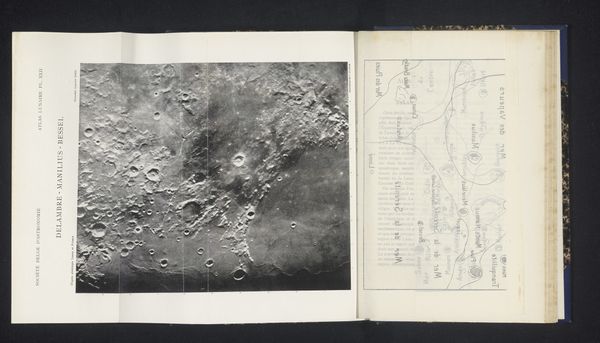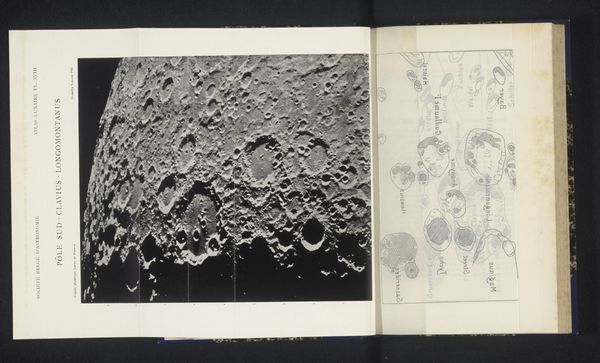
print, photography, gelatin-silver-print
#
aged paper
#
ink paper printed
# print
#
hand drawn type
#
landscape
#
photography
#
personal sketchbook
#
hand-drawn typeface
#
fading type
#
geometric
#
gelatin-silver-print
#
thick font
#
sketchbook drawing
#
sketchbook art
#
historical font
Dimensions: height 231 mm, width 193 mm
Copyright: Rijks Museum: Open Domain
Editor: This striking gelatin silver print, "Kraters op de maan," believed to be created before 1899 by Loewy et Puiseux, gives a real sense of the alien landscape. The stark contrast and detailed craters are fascinating. What historical perspective can you offer on this image of the moon? Curator: It's a compelling piece. Consider the context: late 19th century, an era obsessed with scientific exploration and documentation. The moon, for centuries a subject of myth, became a territory for rational investigation. This image participates in that shift. How do you think the public viewed these types of photographs at the time? Editor: I imagine people were captivated! It was likely one of the first times they had seen the moon with this level of detail, moving it from the realm of imagination to something tangible and scientifically observable. Curator: Precisely. This image isn't just a neutral document; it’s a carefully constructed representation that catered to public fascination and the desire for knowledge. The presence of the labels and descriptive notes around the photo speak to the work's function. But the images, presented in book format, also reference historical conventions for understanding and disseminating geographical and anatomical knowledge, where books of plates were often sold by subscription to wealthy elites. The creation and dissemination of this artwork was a very political act! Editor: That's a great point about it being in book format. So it's about accessibility, even within its own historical limitations, about creating a broader visual understanding? Curator: Absolutely! Now I am thinking about the broader context: what impact do you think increased access to such images of the moon had on artistic representations? Editor: I'd never considered all that. It shifts my perspective on the photograph and helps me to recognize its impact in democratizing visual information and shaping artistic practices of the time. Curator: Indeed. It reveals how images shape our understanding and engagement with both scientific progress and its public role in society.
Comments
No comments
Be the first to comment and join the conversation on the ultimate creative platform.
